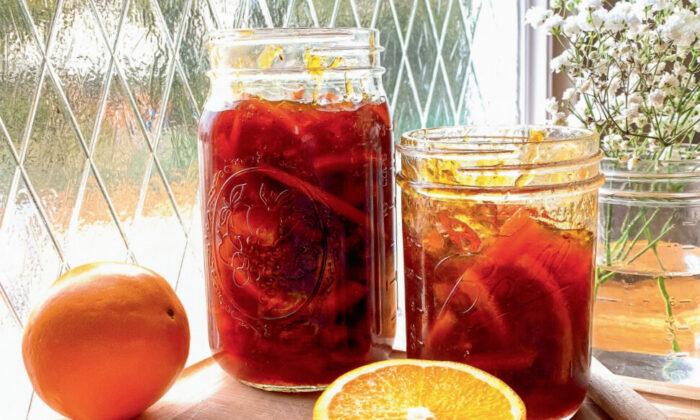This recipe is the result of tweaking and adapting from many recipes over the years. In this version, I cut my peels rather thickly, as I like the pungent orange flavor. If you prefer a milder, sweeter flavor and softer texture, cut the peels very finely.
Seville oranges are the best ones for marmalade as they have a naturally high level of pectin—the ingredient that helps the marmalade set, naturally found in oranges, concentrated in the peel—so use those if you can find them.
- 10 medium oranges, preferably Seville
- 4 lemons
- 16 cups water
- 5 pounds white granulated sugar
Place the orange and lemon slices in a large stockpot and add the water. Bring the mixture to a boil. Remove from the heat and add in the sugar, stirring until dissolved. Cover and let stand overnight.
In the morning, bring the mixture to a boil again. Once it reaches a boil, turn the heat to low and let the mixture simmer for at least 2 hours, or until the marmalade reaches 220 degrees F. (A test to see if it’s ready: Place a plate in the freezer until it is well chilled. Put a spoonful of the marmalade on the plate and let it sit for 30 seconds. Tilt the plate. The marmalade should have a soft, gel-like appearance and consistency, and should only move slightly. If it is runny and watery, it is not ready yet.)
Ladle the marmalade into clean mason jars. These jars will keep well in the refrigerator for up to a month, but if you wish to keep the marmalade fresh for longer, use a canning method for longer storage.





